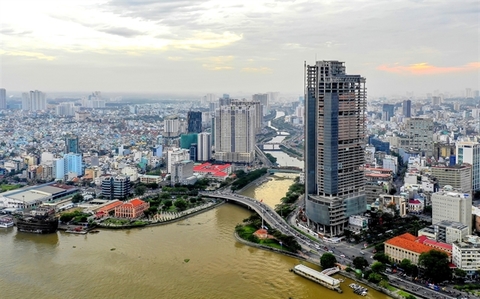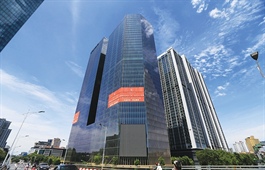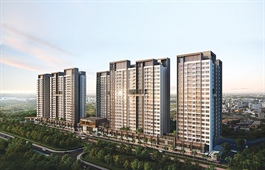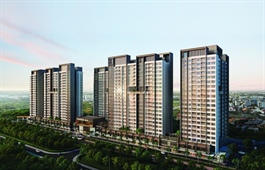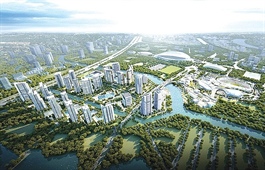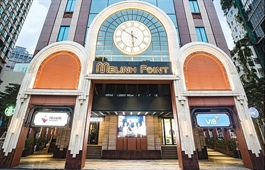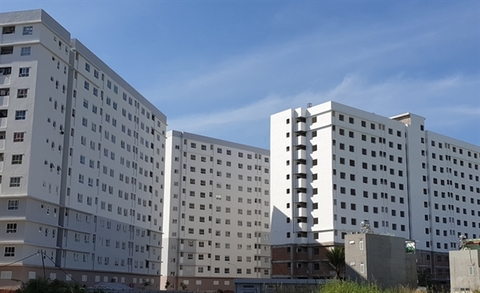Condo market set for bumper 2021: Expert
Condo market set for bumper 2021: Expert
The local condominium market is expected to maintain growth in the amount of information about property products posted on batdongsan.com.vn and the level of interest in 2021, said Nguyen Quoc Anh, chief business officer (CBO) of the batdongsan.com.vn.
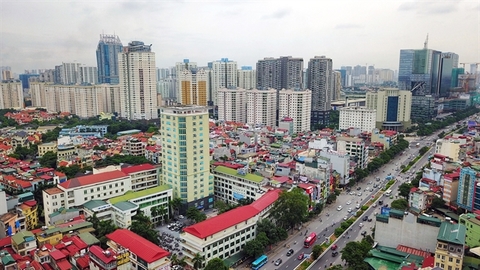
Next year, apartment prices would continue stablility in Ha Noi while it is forecasted to increase by 9 per cent year on year in HCM City, Anh said.
The level of interest in private houses and townhouses is set to decrease, driving down rental prices, while the asking price for private homes in Ha Noi is forecasted to grow by 5 per cent in 2021.
Anh said investors are most interested in landed property, but due to the COVID-19 pandemic, interest has decreased.
Infrastructure projects that started in 2020 are expected to increase the level of interest in this segment in the near future, Anh said. Of which, the level of interest in information about property in Thuy Nguyen District, Hai Phong City and Bao Loc City, Lam Dong Province surged in November after the approval of a project establishing Thuy Nguyen City and a project building the Tan Phu – Bao Loc expressway, respectively.
For industrial real estate, Anh said it was a bright spot this year and that would continue into 2021 due to free trade agreements and plans to relocate production plants to Viet Nam from many foreign corporations.
"This is a chance for Viet Nam, but whether Viet Nam can take the chance or not is another story. The development of this property segment does not stop at the construction of industrial parks for foreigners to rent. It must have a comprehensive development strategy for this segment," Quoc Anh told the Vietnam Real Estate Conference held by batdongsan.com.vn on Tuesday in Ha Noi.
In the first six months of this year, only one industrial park was established, showing while there is much talk about the potential of industrial real estate, little gets done in reality, Anh said.
In the third quarter of 2020, industrial real estate showed impressive growth in searching for information about industrial zones.
In the third quarter, the country had 369 industrial zones to be established, up 33 industrial parks compared to the second quarter and 280 industrial parks were put into operation, an increase of 19 industrial parks compared to the second quarter.
This year had 10 new major transport projects to be started nationwide, including five in the central region.
“Along with moving investment to Viet Nam, these large transport projects will have a strong impact on the domestic real estate market. Therefore, the market will have positive changes in 2021,” Anh said.
In addition, with a lot of positive information about the COVID-19 vaccine, the resort property segment is also expected to recover next year, he said.
At the seminar, Nguyen Hong Van, Market Director - JLL Vietnam Real Estate Services Company, said the price and occupancy rate of industrial real estate in Viet Nam will continue to increase in the next few years. Of which, two industries leading the number of companies investing in industrial zones are electronic components and logistics.
According to Van, the region with the most opportunities for real estate development in industrial zones is in the north, especially Hai Phong City, due to large land area, competitive price, convenient transportation and synchronous development of infrastructure.
“So, along with traditional industrial real estate, the demand for modern logistics will also be an opportunity to help the northern industrial real estate market thrive in the near future,” Van said.
However, it would face a number of challenges such as hot development leading to a shortage of labour, limited infrastructure conditions such as energy, wastewater treatment and support services for the development of manufacturing logistics and housing.
The investment to industrial zone is a long term performance within 30-50 years but not only 3-4 years, Van said, so investors should study carefully this investment.
If they are unable to do that investment, they can put capital to construction of houses or satellite urban areas around industrial zones for workers to buy or rent, she said.






